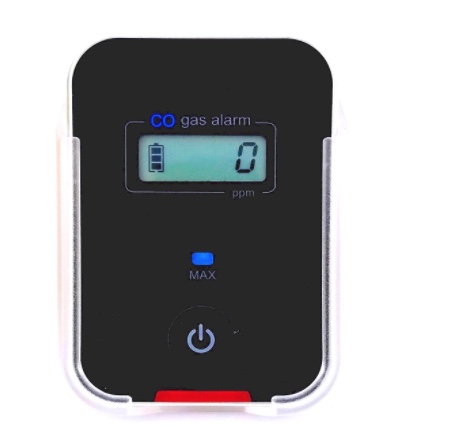Yesterday my news feed flashed with the story of 10 hospitalized because of a Winter Storm Quinn carbon monoxide hazard. For yesterday’s blog about the Quinn carbon monoxide poisoning in North White Plains, New York, click here. At the center of that story was an electric generator. If you have been reading this blog, it is the same story, different storm. Last fall it was Hurricane Irma that hit Puerto Rico and Florida, leaving behind victims of these same type of portable generators. The victims are not just people killed, but the thousands of those who get poisoned. Our attention was drawn recently to a series of generator related carbon monoxide poisonings that happened not with the expected portable electric generators, but installed standby units that were installed too close to occupied living zones.
Seasonal Gift May Have Prevented a Quinn Carbon Monoxide Tragedy
The positive in yesterday’s developments was a gift my firm gave to a colleague in a community near where Winter Storm Quinn Carbon Monoxide event occurred this week. Every year we get many gift baskets of fruit and other holiday items from colleagues around the country. A couple of years ago I stopped trying to find something similar to give in exchange. Instead, I started giving colleagues portable carbon monoxide alarms that were far more sensitive than the standard UL approved alarms that many people put on their ceilings of plug into walls. This year I gave the portable alarm from Forensics, which you can buy here. https://www.amazon.com/Monoxide-Detector-FORENSICS-Protection-Vehicles/dp/B076S6KBP2/ref=sr_1_2?ie=UTF8&qid=1520535626&sr=8-2&keywords=forensic+car+carbon+monoxide+detector

Winter Storm Quinn carbon monoxide poisonings can be eliminated by assuring that you have a sensitive carbon monoxide alarm, such as the one shown here.
I called a colleague to ask him about the Winter Storm Quinn Carbon Monoxide tragedy in his back yard. He told me that the alarm I had given him had gone off the day before at his paralegal’s residence. Both he and his paralegal had portable electric generators. Those generators were bought when Hurricane Sandy left them without power in 2012. Winter Storm Quinn had a similar impact on this part of New York and out came the portable electric generators. My colleague understood about not having a generator inside. What he and his staff didn’t realize is that generators outside must be at least 20 feet from buildings.
Standby Generators can be a Carbon Monoxide Hazard
After Hurricane Irma in Florida carbon monoxide poisonings occurred because standby electric generators were installed inside this 20 foot perimeter. As I said yesterday, the fault in these Quinn carbon monoxide poisonings lies with the manufacturers of these generators. In the Florida case, the fault also lies with any contractor who installed an engine closer than 20 feet from the inside of a home.
We understand how critical a return of power is after a power outage. My father spent his career designing standby generators, my brother his career servicing these machines. Yet, getting power back on is not worth a life. The industry knows what happens in an emergency. They know that not all consumers understand not to a generator inside. Further, the industry needs to do more to warn consumers as to what is a safe distance outside.
I also believe that stores and other businesses that rent these generators, should also make sure that their customers have a long enough extension cords that they will be able to leave the generator 20 feet from the house.

Question why doesn’t Florida state code tell us that ?